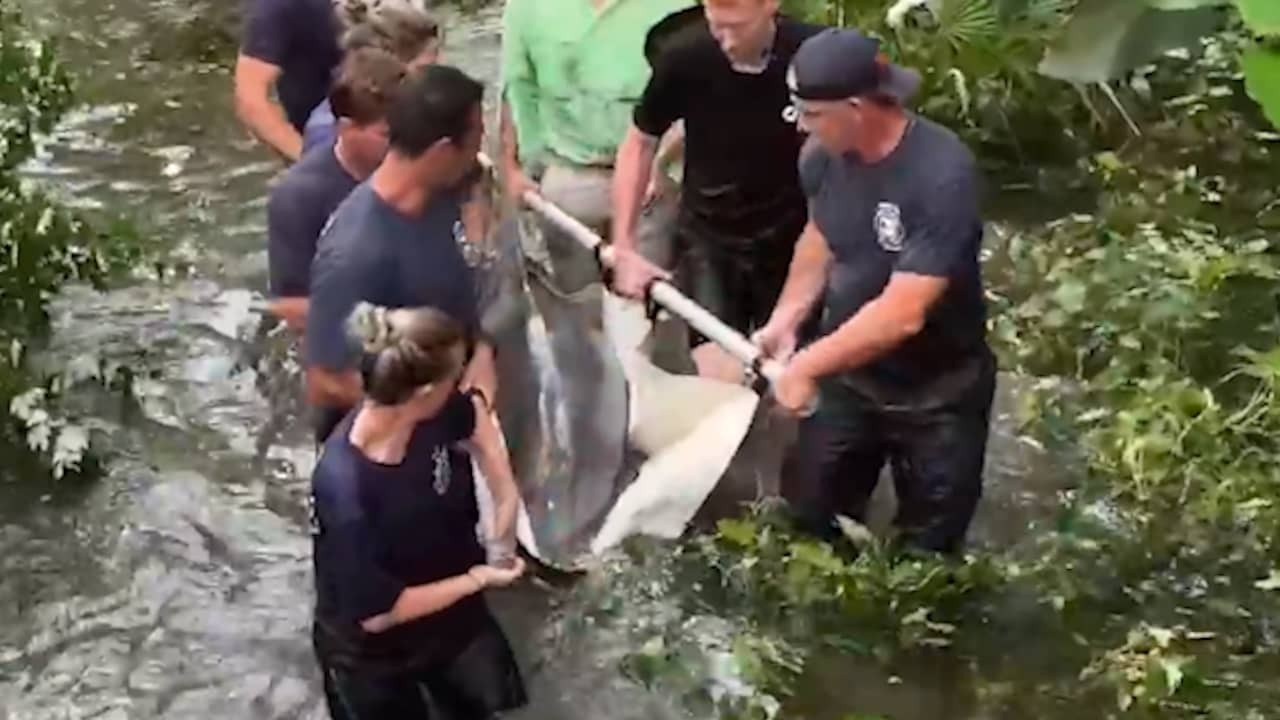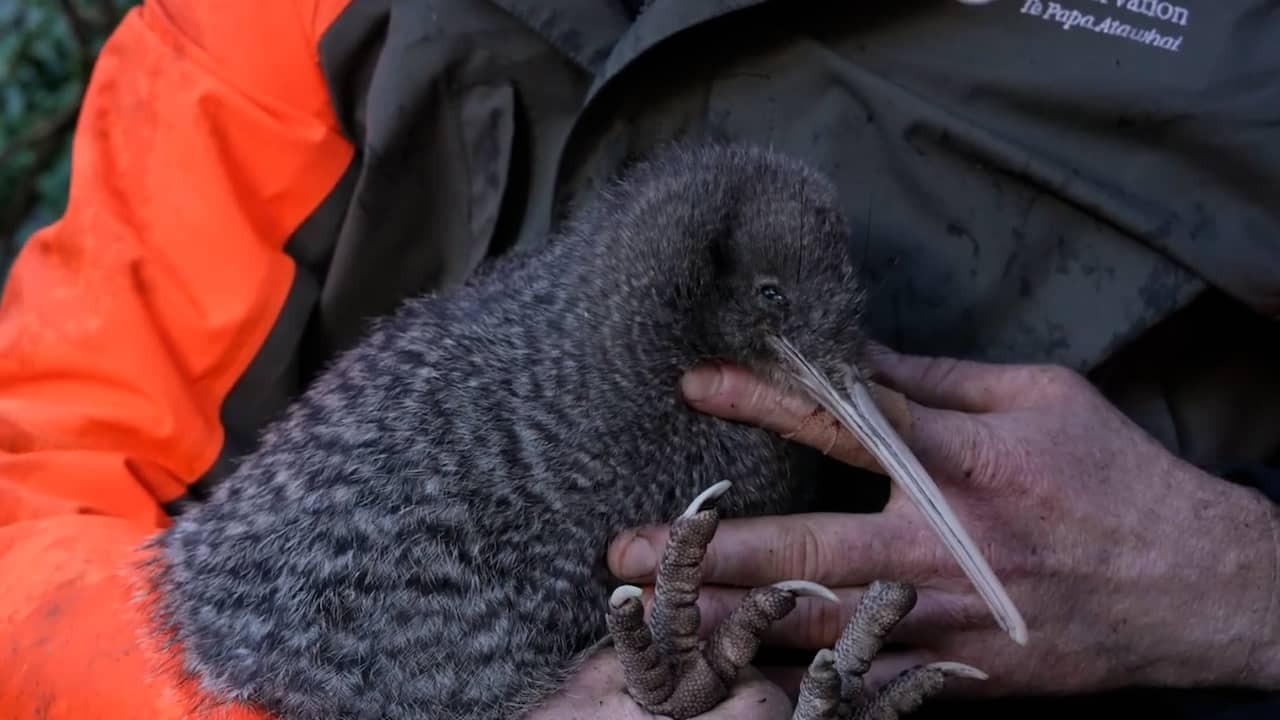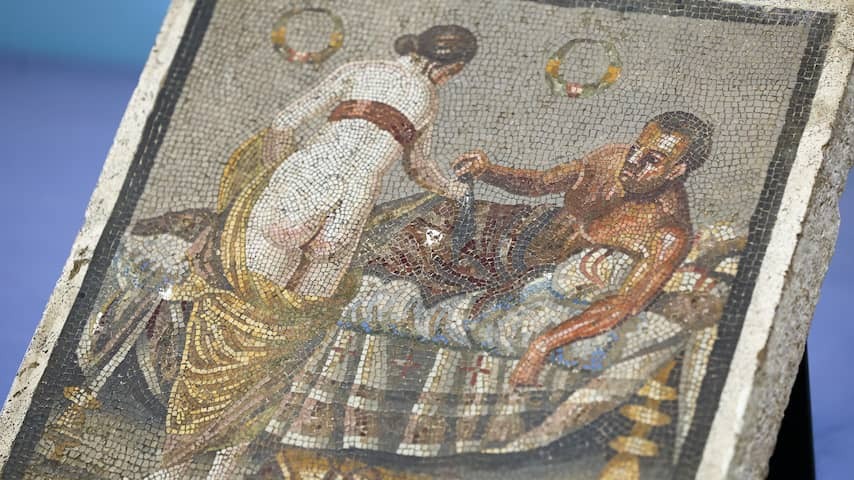
Because negative news often dominates NU.nl, positive news sometimes gets lost. That’s why we compile a list of cheerful news items every week.
Rare Kiwi Species Seen in the Wild Again After Fifty Years
A very rare kiwi species has been seen on mainland New Zealand for the first time in almost fifty years. The bird was last spotted in 1978 and was therefore considered extinct.
The little grey kiwi is the smallest kiwi species. The bird looks like a round duster with a long bird’s beak attached. In the video below, you can see that the kiwi species owes its name to the grey spots. The indigenous people of New Zealand also call the bird the pukupukukiwi.
 0:34
0:34
New Zealander cares for rediscovered rare kiwi
A local hunter reported seeing the animal for the first time in March. A ranger from the Department of Conservation traveled to the site to confirm that it was indeed a little grey kiwi.
The department wants to protect the kiwi in the future. The ranger himself can hardly put into words how wonderful he finds the rediscovery. “It’s like finding a needle in a haystack. We are very excited that we have found him again. The pukupukukiwi is one of the unique species that make New Zealand so special.”
Children with DNA from Three People Now Have Less Chance of Life-Threatening Disease
Eight children in the United Kingdom have been born through a special treatment. Doctors have used DNA from three different people, so the children have much less chance of life-threatening diseases.
The mothers of the eight children had mutations in parts of their cells. These mutations can cause children to end up in a wheelchair or die early.
In this treatment, the so-called IVF technique is used to bypass the mutations. The mother’s and donor’s egg cells are both artificially fertilized with sperm from the father. Then there are two embryos, one in which the mother’s mutations are present and one from the donor, without mutations. The cell nucleus from the mother’s embryo is placed in the donor’s embryo. In this way, the embryo no longer has mutations and still has the DNA set of the parents.
The eight children were all healthy at birth. Both the doctors and the parents of the children are happy and relieved. “As parents, we only wanted to give our child a healthy start in life,” one of the mothers tells The Guardian. “After years of uncertainty, this treatment gave us hope – and then it gave us our baby. We are overwhelmed with gratitude. Science gave us a chance.”
Women Build Houses with Plastic Bricks in Uganda
Women from the East African country of Uganda have transformed eighteen thousand plastic bottles into a house. Together with the non-profit organization Pendeza Shelters, they recycle plastic waste for their own community.
Uganda suffers greatly from plastic waste. According to the organization, the country produces approximately 600 metric tons of plastic waste per day. Less than 40 percent of that is properly processed.
Pendeza Shelters wants to prevent that. In various places in the country, women learn how to build houses from plastic. They then pass that knowledge on to other women or make it their job. In this way, the organization says it has created more than 230 jobs for women and young people.
The plastic bottles are collected from households in the neighborhood. Then the organization makes plastic bricks from them, with which the women build houses. The plastic bricks replace the usual clay bricks. Clay bricks are polluting because many trees are needed to bake the bricks.
Italy Gets Erotic Mosaic Back That German Officer Had Stolen
Germany has returned a Roman mosaic to Italy. During World War II, a Nazi officer had stolen it from Pompeii.
The artwork in the photo below shows a partially naked woman and man. According to the director of the archaeological park of Pompeii, it depicts “domestic love”. The director calls the return an open wound that is healing.

The Nazi officer had given the artwork to a German citizen, who kept it until his death. The heirs of that person contacted the police unit in Rome responsible for the protection of cultural heritage.